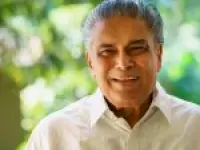
CSDS-Lokniti Post-Poll Survey: Key Takeaways
The 2024 Lok Sabha election had its peculiarity. The NDA-led BJP though it emerged as the majority, a strong and effective opposition has come into existence for the first time in 10 years. As per the CSDS, the INDIA bloc has gained 11 percentage points among OBCs, while NDA gained 6 points among Adivasis.
As per the post-poll survey released by Lokniti-CSDS, the major gain for the opposition INDIA bloc has come from the dominant OBCs and to some extent Dalits. While NDA made its major gain from Adivasis maintaining its dominance among Upper Castes. The CSDS-Lokniti post-poll survey highlights these trends in this regard.
Read also: NDA 3.0 Cabinet: Know The Names of Probable Ministers New Narendra Modi Government
BJP’s successful subaltern reach
The saffron party was able to manage its carefully nurtured constituency of voters- upper caste Hindus, OBCs, and Adivasis as well as Dalits to some extent. However, a slight movement of these group towards the opposition has affected the party’s vote banks in states including Uttar Pradesh.
Unexpected diversity in Dalit votes
Though the BJP has received 31% of the Dalit votes, there was an apparent diversity of Dalit electoral behavior in this election. The BJP’s 400 paar slogan among the Dalits created an impression that the party with a significant majority would try to make changes in the constitution. Taking this as an electoral issue, the opposition bloc took up the protection of the Constitution as their political symbol. And this helped them gain the support of a segment of the Dalit voters.
Minority vote bank
The minority community this time did not get behind the BJP. As the party this time took up the divisive politics, polarizing the voters on religious lines, the Muslim minority decided to stay away from the saffron party. However, when 65% of Muslims supported the opposition allies, 8% voted for BJP. The BJP also secured 10% of Sikhs and 14% of the Christians votes, respectively.
Read also: Congress President Mallikarjun Kharge Will Attend Narendra Modi’s Oath Taking Ceremony
Rural-urban divide
People who struggled with their economic situation more likely voted for the opposition meanwhile those who felt the economic situation remained unchanged for them divided their votes equally between the ruling regime and the opposition.
Fading popularity of Narendra Modi
Ever since the rise of Narendra Modi in 2014, his leadership has attracted many voters. However, the attempt of the saffron party to make him the face of the polls to woo the voters did not help them get the results they needed. Unlike the previous election, this time there has been a decline of six percent in the mention of Narendra Modi as the prime ministerial choice.













